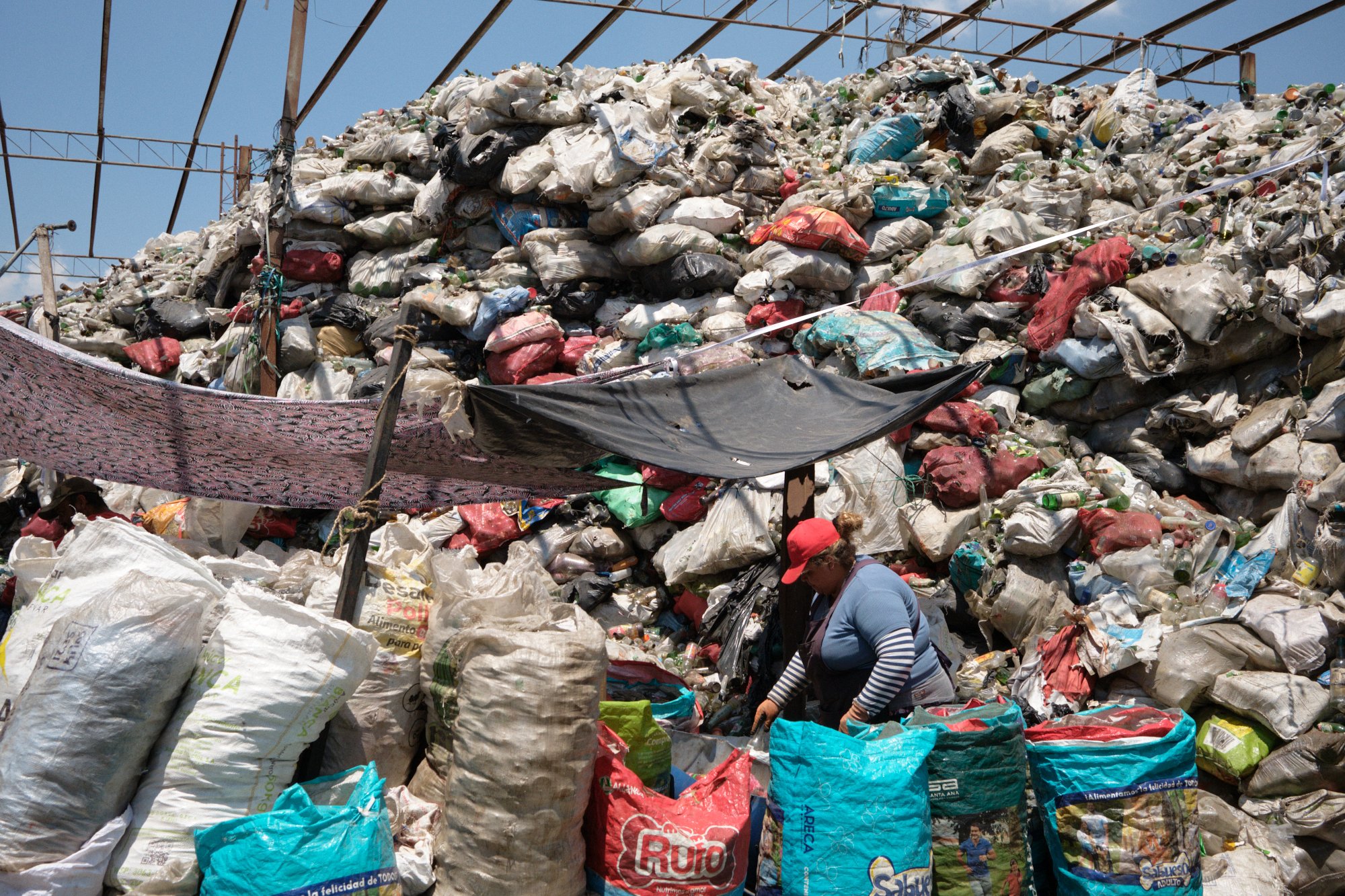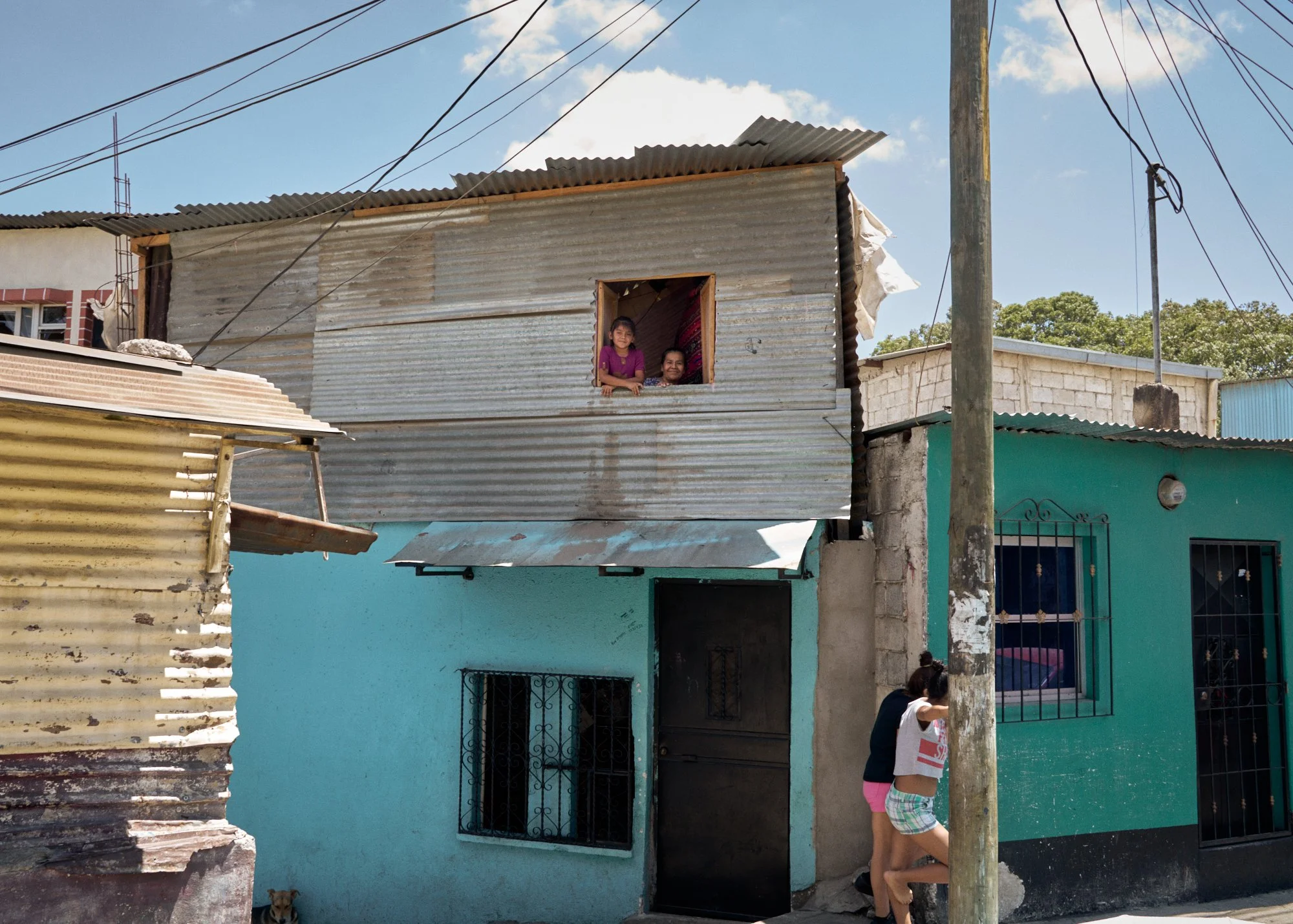The Weight of What’s Left
How One Neighborhood Has Been Shaped by Central America’s Largest Landfill
Chris Bull - 2025
A typical streetscape encapsulating the entirety of neighborhood Zona 3 in Guatemala City.
Just a few kilometers from the heart of Guatemala City lies Central America’s largest landfill, “El Basurero”—a 40-acre expanse that receives over 1,000 tons of waste each day. For thousands of people in the surrounding neighborhood of Zona 3, the dump is not just a backdrop, but a lifeline. Yet this lifeline comes at a steep cost.
Zona 3, one of Guatemala’s poorest and most dangerous neighborhoods, is home to roughly 60,000 people caught in the grip of an ongoing humanitarian crisis. Each day, at least 7,000 residents rise before dawn to begin their journey to the dump. There are several entrances, but only one official gate large enough for trucks. Through it, hundreds of vehicles stream in daily—some carrying hidden passengers tucked into trunks, beneath blankets, or in truck beds, attempting to sneak in children, pregnant women, and others who aren’t authorized to enter.
A view overlooking the ravine that comprises part of the landfill in Zona 3, “El Basurero”.
Inside, the scene is chaotic but purposeful. Waste pickers scour towering piles of garbage, sorting recyclables—plastic, glass, metal, paper—by material and color. Others search for items to sell, repair, or use for their families. Some even dig for food scraps to survive. Most remain from sunrise until dusk without breaks, returning home with whatever they’ve managed to collect.
Though the entrance is guarded, regulation ends at the gate. Inside, the landfill is unmonitored and unstudied. There are no city efforts to collect data, assess risks, or track the health impacts—let alone the many deaths that occur. During the dry season, fires fueled by chemical waste break out regularly, their suppression uncertain and dangerous. In the rainy months, flooding often triggers landslides that wash away waste pickers near riverbeds or steep cliffs.
A young man works in midday heat to organize and stack bags of separated garbage.
A gentleman in Zona 3 claims this area to pick and separate trash.
A woman collecting glass smashes the bottles to decrease the volume in order to carry more with her each day.
A woman and her husband work each day at this specific claimed spot to collect glass bottles and separate by color.
Zona 3 itself is a maze of narrow alleys lined with makeshift shacks and concrete homes—many overflowing with the trash brought back from the dump. Most people here live on less than a dollar a day, and only about 30% are literate. On a good day, a worker might earn $4 after 12 grueling hours—but even that modest income is vulnerable to theft. Gangs, including MS-13, routinely extort landfill workers, and their grip on the community is tightening.
With parents away working from sunup to sundown, children are often left unsupervised—making them easy targets for gang recruitment. Drug use, particularly crack and cocaine, is rampant. Once used by workers to endure the punishing labor, drugs now fuel deeper decline. Narcotraffickers have seized control of large parts of the neighborhood, and violence is a daily reality. Residents speak of murders happening in broad daylight while police officers—often complicit—stand by and do nothing. Gangs also control many of the trucks entering the landfill, using this leverage to make deals with workers who pay for exclusive access. Fear of retaliation keeps residents silent, concealing the crisis from the public eye and reinforcing the absence of governmental intervention.
Health conditions are equally dire. Airborne toxins, contaminated water, and infectious diseases plague the area. Preventative care is almost nonexistent; treatment, even more so.
The neighborhood of Zona 3 from atop a local resident's home.
Living in Zona 3, this gentleman whose name will remain anonymous now sells candy at a small market to supplement his income.
The trash that gets brought back from the landfill piles up in front of a home in Zona 3.
Across from the landfill, the entrance to Zona 3 is guarded on one end by local gangs, and on the other end by police.
A local family specializes in collecting and repairing televisions from the landfill in order to sell them.
Heaps of trash stack up to block the narrow roads of Zona 3.
A car is used to support the mounded garbage in a local's driveway.
Bags of trash line the streets to the point where roads are no longer usable for vehicles.
An overflow of trash ends up on the roofs of homes.
Lesly, a waste picker in her mid-30’s who lives in Zona 3, comes from a family who’s very familiar with the landfill. Her daughter, Joselin, remains at home while she leaves each day to work for nearly 12 hours without rest. “It’s hard work, and there are no days off. It would be nice to spend more time at home and see my family during the day, but even through bad health and impairments, work must continue”, she says as she reveals her stamps of tenacity. Though with much weight in her expression, she carries on with an artless smile. “We have enough, and we’re happy: our house, some water to drink, clothes for our children, and the memories of our family. This is our home.” When asked about the worth of so much grueling work and health consequences, she replied, “Around here, so many people do nothing. There are many drug users, a lot of gang activity, and too many people staying home with no motivation and no means to earn anything. I am happy to have work—a way to provide. It’s our survival; it’s what we know.”
Lesly of Zona 3 shows that her lacerations and multiple pregnancies which ended in C-sections weren't cause enough to pause her work at the landfill.
Lesly shows her tendon and ligament damage caused by a fall at the landfill.
A wall inside the home of Lesly and Joselin on which hangs a picture of her family and a banner that translates to "Happy".
Memories of family and children's graduations line the walls where Lesly and Joselin live.
Lesly peers outside in the direction in which she will soon walk to work for another 12 hours.
The living room inside Lesly's home occupied by clothes, blankets, and appliances which were retrieved from the landfill.
Yet despite the difficulties, many people from across the country continue to migrate to Zona 3, viewing the landfill as a source of opportunity. During the 2009 global economic crisis, President Álvaro Colom declared a national state of calamity in response to skyrocketing food prices, severe drought, and widespread malnutrition. Guatemala’s GDP fell from 3.3% to 0.6%, while the trade deficit rose to 9.8%. Thousands from rural areas flocked to the capital in search of work, many arriving with nothing and settling in tents or shacks in Zona 3. But the dump is a deeply stratified system. Those who arrive without existing connections often find themselves without access to claimable waste, locked out of long-standing arrangements with truck drivers—many of whom are controlled by gangs. As competition intensifies, so does the risk of violence and sexual assault.
Still, amid the hardship, Zona 3 pulses with life. Children play in the alleys, neighbors share laughter, and dreams flicker through the smoke. A powerful sense of community thrives—born of shared struggle and survival beneath the ever-present haze. Every moment without privation is cherished, even if shortlived. And while there is no official organization for landfill workers, the recent presence of NGOs has brought some relief: offering education, oversight, and opportunities for those most at risk.
Two boys seen having a dance competition and playfully poking fun at each other.
Joselin sits on her bed proudly wearing a shirt with a picture of her and her daughter.
Albeit an MS-13 controlled area, a lighter mood ensues as parents set-up inflatable pools for the children to play in.
Two sisters peer out of a window where they sell snacks and drinks to passersby.
A young girl and her grandmother look out of their home's window in Zona 3.
A young man fixes a fan motor found at the landfill.
But the future of this fragile ecosystem hangs in the balance. A proposed city law would require citizens to sort their waste at the source, eliminating the need for informal recyclers. Though intended to create a cleaner, healthier Guatemala, such a shift would devastate Zona 3—erasing its primary source of income and leaving thousands without work. With little education and few transferable skills, many families would be left with nothing. In a seeming win-lose situation, we must ask: does ending one crisis risk beginning another?
Still, some residents hold onto hope. Joselin, whose mom spends each day in the landfill, acknowledges the complexity. “It’s good because it could help the country. I understand that sorting garbage and encouraging all Guatemalans to recycle is a way to improve the greater situation,” she says. “But for us here in Zona 3, it would mean losing so much, too.”
























